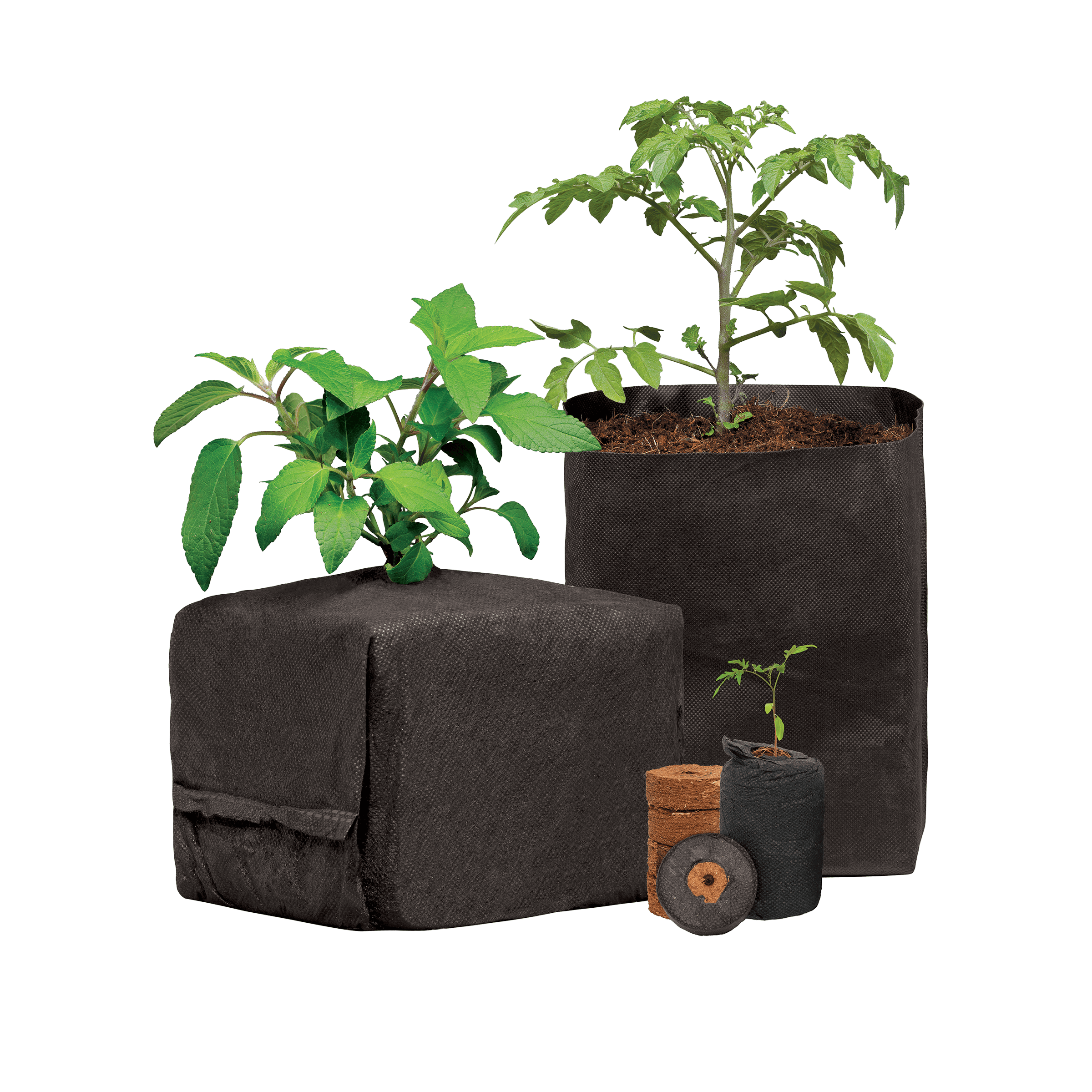Key Takeaways
- In cultivation, growing media needs to be paired with the appropriate irrigation strategy to balance root zone air and water for optimal plant growth and yield
- When using Botanicare® CocoPro®, a less intensive irrigation strategy with only a few pulses per day may result in greater flower yield and more large flowers, without compromising THC concentration compared to an aggressive multipulse strategy
- When using rockwool, an aggressive multipulse strategy may lead to greater flower yield, but reduced THC concentration compared to a less intensive irrigation strategy
- Irrigating with fewer pulses per day is easier for a grower to implement, uses less water and fertilizer, and produces a similar or better yield and THC concentration as growing in either rockwool or coco using an aggressive multipulse strategy
Background
Most indoor and greenhouse Cannabis producers cultivate their crop using soilless growing media. These media can be composed from peat, coconut coir, rockwool, or other minor ingredients, and can vary substantially in their physical and chemical properties. While there is no “correct” growing medium for all cultivation scenarios, the media used needs to be paired with a fertigation method that balances root zone air and water to optimize production (Nemati et al., 2021).
Balancing root zone air and water is essential for root formation, growth, respiration, health, and water and nutrient uptake.
A plant’s water demand is directly related to transpiration, which is affected by pot size, pruning practices and leaf area, genetics, and VPD (Zheng, 2022). In order to achieve maximum yields, irrigation needs to be managed to deliver an appropriate amount of water to meet plant transpiration requirements while still achieving soil dry downs to balance root zone air and water.
Method
To demonstrate the magnitude of the effect an irrigation strategy can have on Cannabis, we ran an R&D trial at Hawthorne’s Kelowna Research Station in BC, Canada where we evaluated the effect of two different irrigation strategies on two common types of growing media in an indoor growing environment: a 6” compressed coco block (Botanicare® CocoPro®) and a 6” rockwool block (Grodan®*) (Figure 1). The blocks were randomly distributed on two benches.
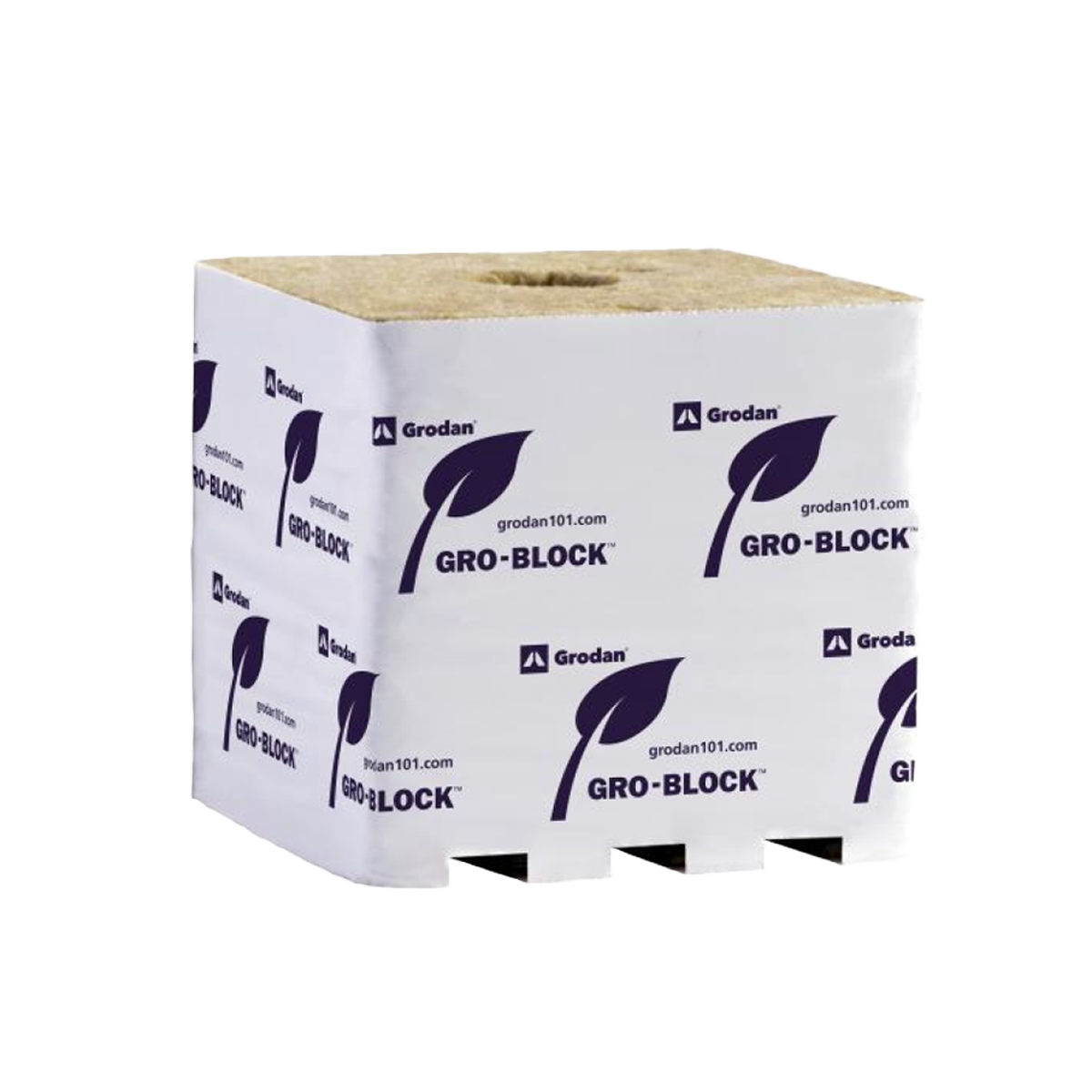
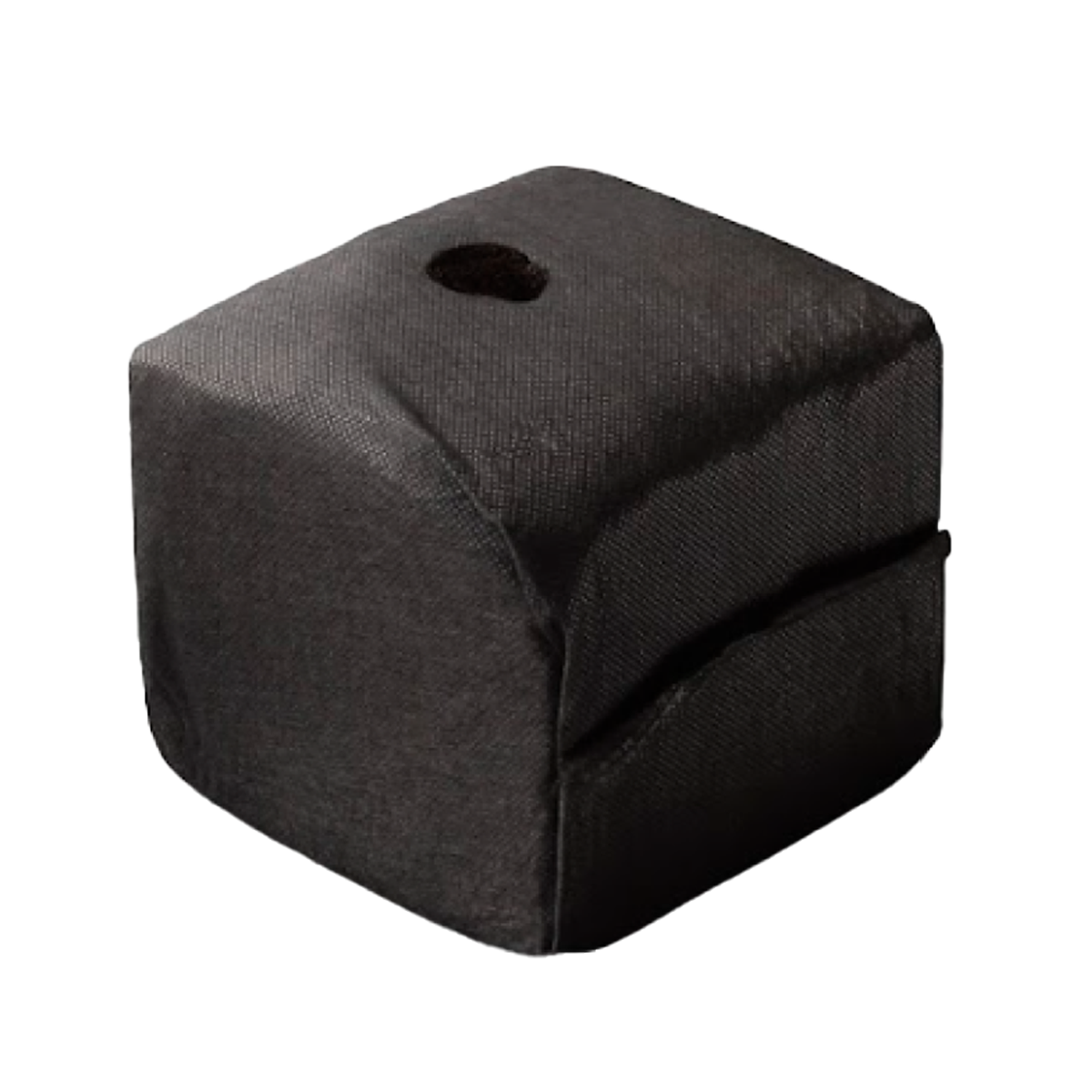
Bench 1 was irrigated using a one-pulse-per-day strategy to saturate the blocks in the morning, then allow them to dry back throughout the course of the day.
Bench 2 was irrigated using a multipulse strategy, where between 6-16 small irrigation pulses were applied throughout the day to keep the moisture content high in the growing media.
We used our standard growth conditions of 16 days propagation, 21 days veg, and 48 days flowering. Plants were grown with Gavita® 1700e LED lighting using the General Hydroponics® FloraPro® system at the Expert Rate with a 2.0 EC target.
Titan™ Triton™ Soil sensors were used to track the percent moisture of the CocoPro 6” blocks on each bench. The plants receiving one-pulse-per-day were much drier overall than the plants receiving multiple pulses per day (Table 1).
Over the course of the 10-week trial, the one-pulse-strategy media had 80 irrigation events and received 58 L of fertigation per plant, while the multipulse-strategy media had 616 irrigation events and received 82 L of fertigation per plant (Table 1).
| Irrigation Strategy | Total L Fertigation / Plants | Total # Fertigation Events | CocoPro® Average Moisture (%) | CocoPro® Moisture Range (%) |
| One Pulse | 58 | 80 | 36 | 7-61 |
| Multipulse | 82 | 616 | 70 | 52-81 |
Table 1. Fertigation solution delivery details for each irrigation strategy and CocoPro® 6” block moisture levels over the 10-week trial
| Irrigation Strategy | One Pulse | Multipulse |
| Total L Fertigation / Plants | 58 | 82 |
| Total # Fertigation Events | 80 | 616 |
| CocoPro® Average Moisture (%) | 36 | 70 |
| CocoPro® Moisture Range (%) | 7-61 | 52-81 |
Table 1. Fertigation solution delivery details for each irrigation strategy and CocoPro® 6” block moisture levels over the 10-week trial
Results
Flower Yield and Large Flowers
We found that cannabis plants grown in CocoPro® using a one irrigation pulse per day strategy had a greater flower yield (Figure 2) and significantly more large flowers (Figure 3) than plants grown in CocoPro® using a multipulse strategy. The multipulse strategy also resulted in higher variability in flower yield when using CocoPro®.
“Cannabis plants grown in our CocoPro blocks that used a one irrigation pulse per day strategy had a greater flower yield and significantly more large flowers than their multipulse counterparts“
–Tera Lewandowski, PhD, Sr. Biology Scientist
Conversely, plants grown in rockwool showed the opposite pattern where they had greater yield using a multipulse strategy than a one-pulse-per-day strategy (Figure 2) with no effect of irrigation strategy on large flower yield (Figure 3).
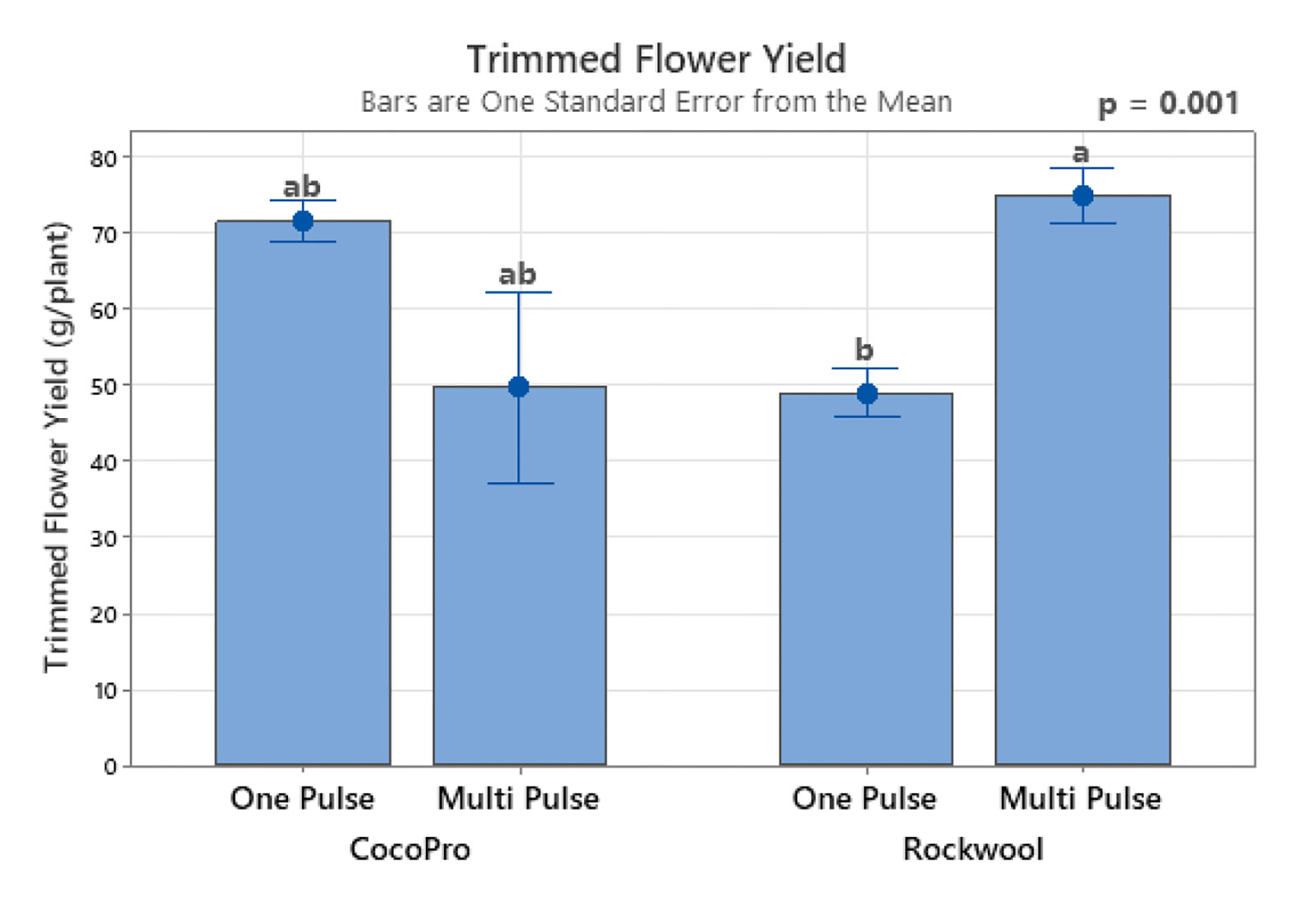
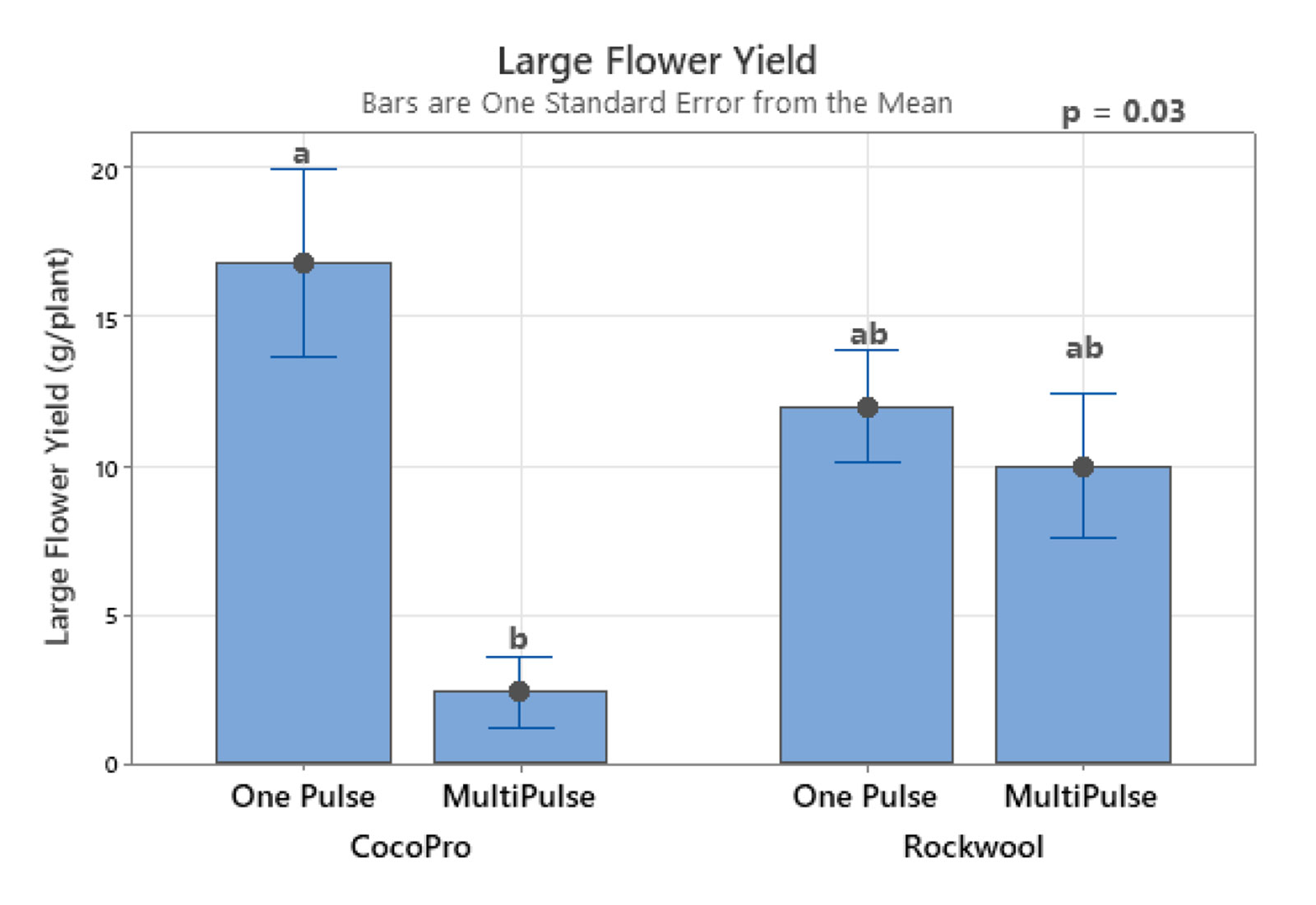
THC Concentration
There was no effect of irrigation strategy on THC concentration for plants grown in CocoPro® (Figure 4).
Plants grown in rockwool had a significantly higher THC concentration when they were grown using a one-pulse-per-day strategy compared to the multipulse strategy (Figure 4), which is opposite the pattern that we saw for yield.
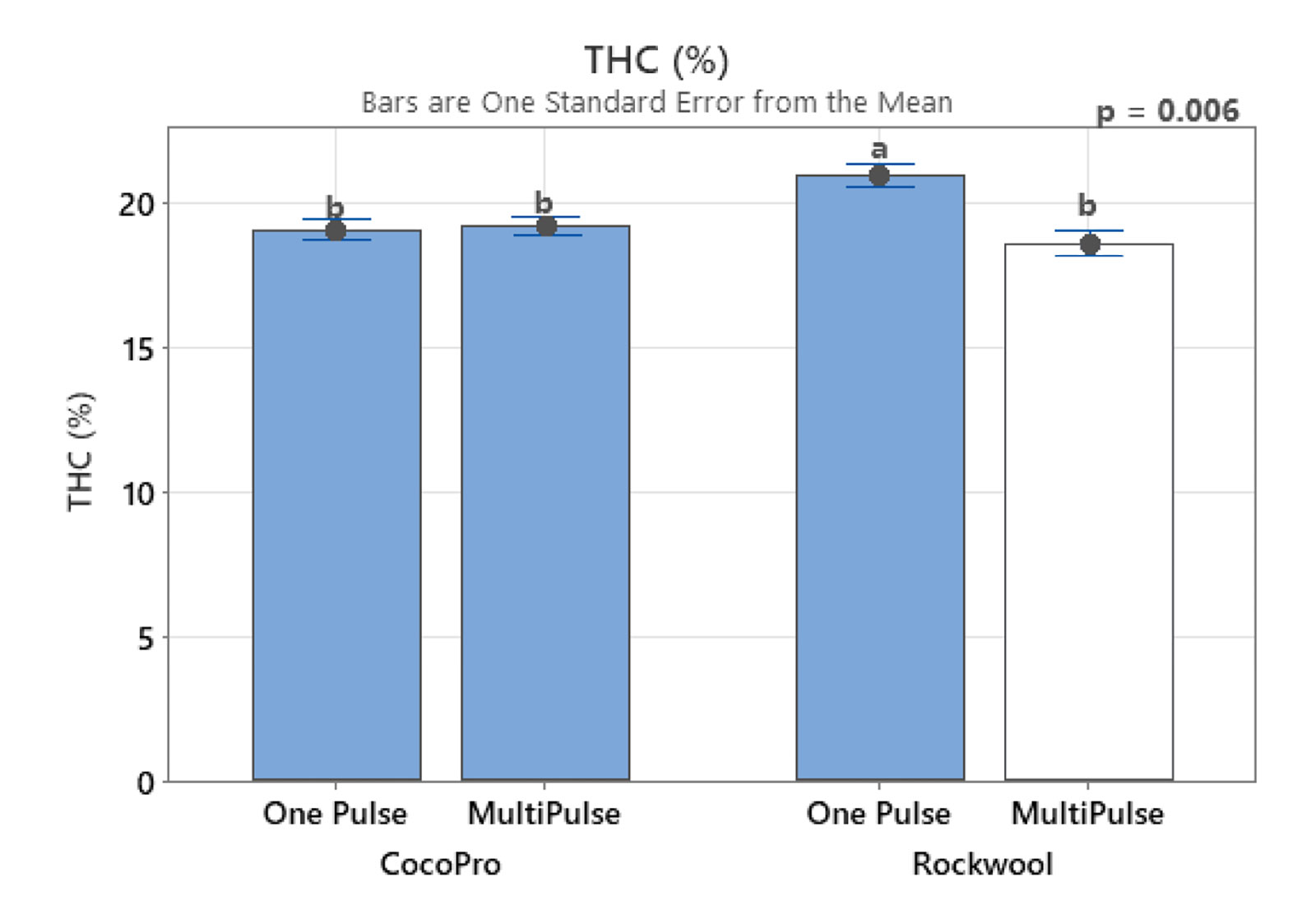
A one-pulse-per-day strategy that saturates the growing media in the morning and allows it to dry throughout the day is more ideal for Cannabis plants grown in CocoPro® than a high frequency, multipulse strategy.
In this case study, we observed the highest yields, largest flowers, and no effect on THC concentration using the one-pulse-per-day strategy in CocoPro®. Conversely, plants grown in rockwool demonstrate the highest yield using a multipulse strategy; however, this strategy has no effect on flower size and results in a reduction in THC concentration compared to the one-pulse strategy.
THC Concentration
There was no effect of irrigation strategy on THC concentration for plants grown in CocoPro® (Figure 4). Plants grown in rockwool had a significantly higher THC concentration when they were grown using a one-pulse-per-day strategy compared to the multipulse strategy (Figure 4), which is opposite the pattern that we saw for yield.
A one-pulse-per-day strategy that saturates the growing media in the morning and allows it to dry throughout the day is more ideal for Cannabis plants grown in CocoPro® than a high frequency, multipulse strategy.
In this case study, we observed the highest yields, largest flowers, and no effect on THC concentration using the one-pulse-per-day strategy in CocoPro®. Conversely, plants grown in rockwool demonstrate the highest yield using a multipulse strategy; however, this strategy has no effect on flower size and results in a reduction in THC concentration compared to the one-pulse strategy.
Discussion
It should be acknowledged that Cannabis plants will vary in their water requirements based on pot size, pruning practices and leaf area, genetics, and VPD (Zheng, 2022). Because of this, while some Cannabis growers utilizing CocoPro® may find a one-pulse-per-day strategy to be optimal, others may need to pulse more often to achieve the ideal balance of water availability to drive plant growth and soil dry downs to provide optimal air to the roots.
There is also discussion in online Cannabis grow forums and websites about growing Cannabis using an aggressive multipulse fertigation strategy. However, depending on your growing media and the aforementioned variables, this may be keeping the substrate too wet, creating an environment where the amount of air and water in the root zone is imbalanced, which can negatively affect yields.
The controlled use of drought stress has previously been shown to increase Cannabis plant yield and the concentrations of some secondary metabolites in Cannabis (Caplan, et al. 2019), highlighting the importance of moderating the balance of air and water available to the plant and tailoring these levels to the substrate of choice. The rapid advancement of sensor technologies, such as Titan Triton Soil sensors, makes this technology an important and affordable solution to incorporate into day-to-day root zone management decisions. This ensures success by monitoring the amount of water (and conversely air) in your root zone.
An irrigation strategy with fewer pulses per day can be easier to implement and more consistent to maintain than a multipulse strategy.
An irrigation strategy with fewer pulses per day can be easier to implement than an aggressive multipulse strategy, which has as many different versions with varying numbers of pulses, and timing and length of each pulse as there are users who implement this strategy. This makes a less intensive irrigation strategy easier to perform consistently, resulting in a more consistent yield turn-over-turn while saving money on water and fertilizer costs.
For example, in this case study, we produced 1.2 g of Cannabis flower for every liter of water applied when growing in CocoPro® using the one-pulse strategy, compared to 0.9 g of Cannabis flower for every liter of water applied when growing in rockwool using a multipulse strategy. This results in a more efficient grow operation, with a 25% increase in flower yield/water utilization.
Conclusion
Cannabis cultivators today use a variety of different types of growing media that vary in their physical and chemical properties. These media should be paired with an appropriate irrigation strategy to balance root zone air and water for optimal plant growth and yield.
Our Kelowna Research Station ran a trial to demonstrate the magnitude of the effect an irrigation strategy can have on Cannabis, using two different irrigation strategies on two common types of growing media – Botanicare CocoPro® and rockwool block (Grodan) (Figure 1).
We observed that plants grown in CocoPro® and using a less intensive irrigation strategy may result in greater flower yield, and significantly more large flowers, without compromising THC concentration compared to an aggressive multipulse strategy.
When using rockwool, an aggressive multipulse strategy may lead to greater flower yield, but no effect on large flowers, and reduced THC concentration compared to an irrigation strategy with fewer pulses per day.
Irrigating with fewer pulses per day is easier for a grower to implement, uses less water and fertilizer, and produces a similar or better yield and THC concentration as growing in either rockwool or coco using an aggressive multipulse strategy.
If you are currently growing in CocoPro®, or are interested in growing using CocoPro® in the future, we encourage you to try an irrigation strategy with one, or only a few pulses per day to increase yield, save time, save water, and save money.
References
Caplan, D., Dixon, M., & Zheng, Y. (2019). Increasing Inflorescence Dry Weight and Cannabinoid Content in Medical Cannabis Using Controlled Drought Stress. HortScience, 54(5), 964-969. https://doi.org/10.21273/HORTSCI13510-18
Nemati R, Fortin J-P, Craig J, Donald S. (2021). Growing Mediums for Medical Cannabis Production in North America. Agronomy, 11(7):1366. https://doi.org/10.3390/agronomy11071366
Zheng, Youbin. (2022). Handbook of Cannabis Production in Controlled Environments. 1st ed.
Learn more about CocoPro®
